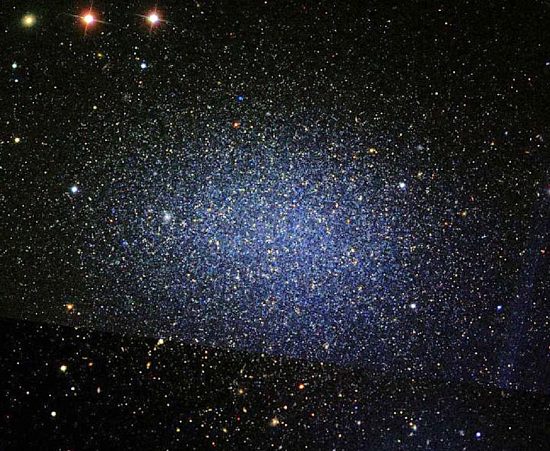
October 5, 2020
Solving a particular puzzle can be clouded by a layer of presumptions.
The Milky Way hosts at least two smaller satellite galaxies, the Large and Small Magellanic Clouds. However, some astronomers suspect that there are as many as 80 or more, such as the Wolf-Lundmark-Melotte dwarf galaxy.
Researchers at the Fermi National Accelerator Laboratory and the Dark Energy Survey propose that galaxies like the Milky Way should have “lots” of other smaller galaxies around them. Since their existence cannot be determined by visible light surveys—they do not see them, in other words—it is thought that they are composed of dark matter (never considering that the theory is wrong).
In 1933, Fritz Zwicky was studying the Coma Cluster. He found that his calculations for orbital acceleration and stellar mass were off by a factor of about 160, so he concluded that there must be something invisible to his instruments somewhere within the cluster that was holding it together. He thought that the material was non-luminous, so he called it “dark matter”.
Contrary to popular theories, the Electric Universe proposes that clusters of galaxies, the galaxies themselves, and associated stars are driven by electric charges in plasma. Birkeland currents create z-pinches between spinning magnetic fields in an electrical vortex. Compressed plasma forms electromagnetically confined spheres, some in arc mode, some in glow mode and some with variability between the two states.
Cosmic Birkeland currents flow into galaxies, so stars are powered by those currents. Galaxies, in turn, receive their power from intergalactic Birkeland currents that are detected by radio astronomers as filamentary structures traceable by their magnetic fields.
Birkeland currents are drawn toward each other in a linear relationship, with a long-range electric force attraction 39 orders of magnitude greater than gravity, although their magnetic attraction is weaker. Dark matter can be dismissed when electric charge flow is recognized.
As written many times, when Birkeland currents interact, they twist around one another, forming a helix. If a cross section could be taken through plasma trapped in their interstices, it would reveal the familiar barred-spiral shape of a galaxy. As Electric Universe pioneer and Nobel laureate Hannes Alfvén postulated, electricity flows out from the poles of a galaxy and then back through the spiral arms. The circuit closes above and below the galactic disk. The circuit receives its driving power from Birkeland currents that connect the galaxy with the rest of the Universe.
Galactic z-pinches form a cylindrical particle beam, coaxial with the galaxy and beyond the edge of the disk, which energizes a ring of stars. Observations from the Sloan Digital Sky Survey confirm such a ring, a separate structure that surrounds the galaxy at a reported distance of 120,000 light years.
Instead of dark matter dwarf companions, the Milky Way and other galaxies most likely have dark mode electrically energized satellites.
Stephen Smith
The Thunderbolts Picture of the Day is generously supported by the Mainwaring Archive Foundation.












